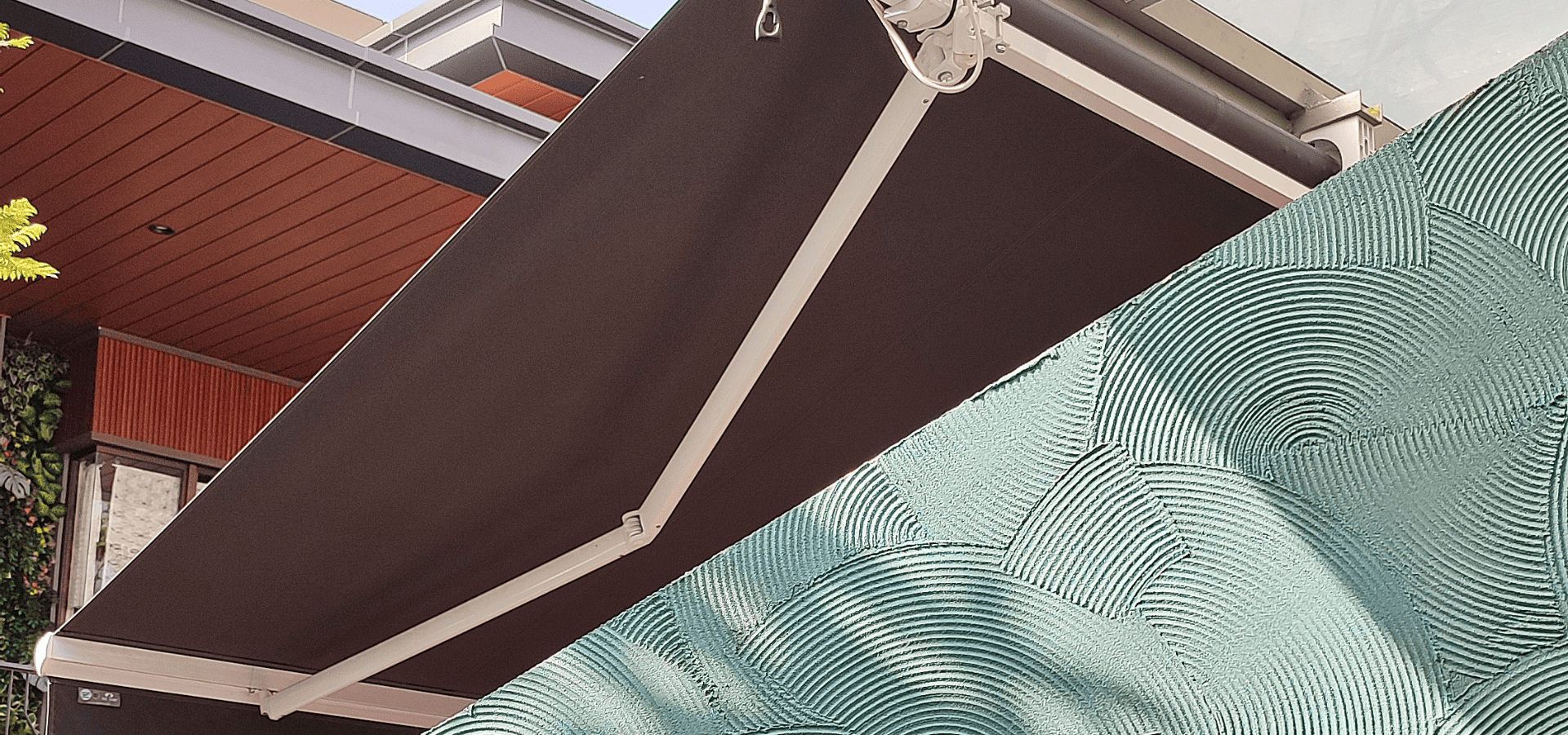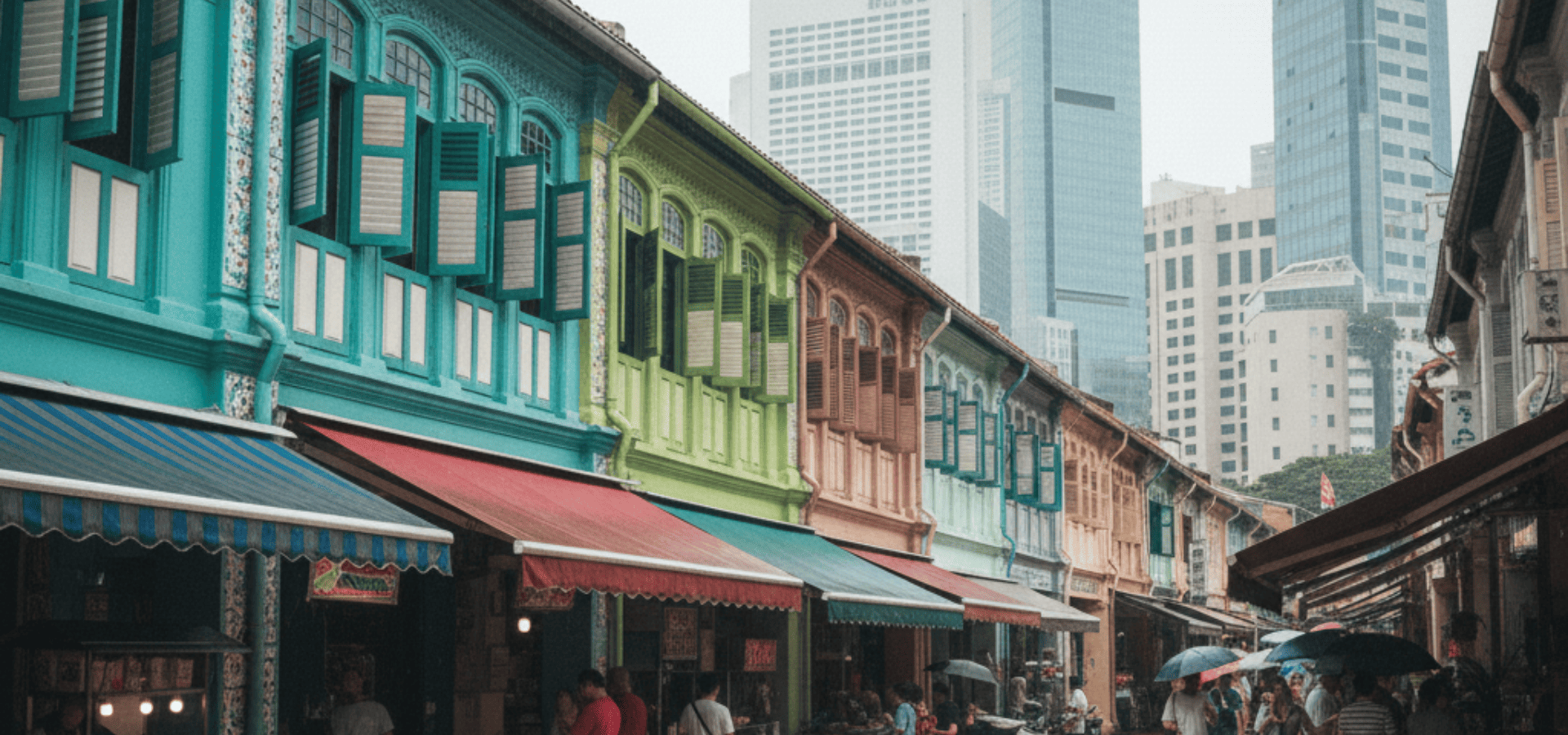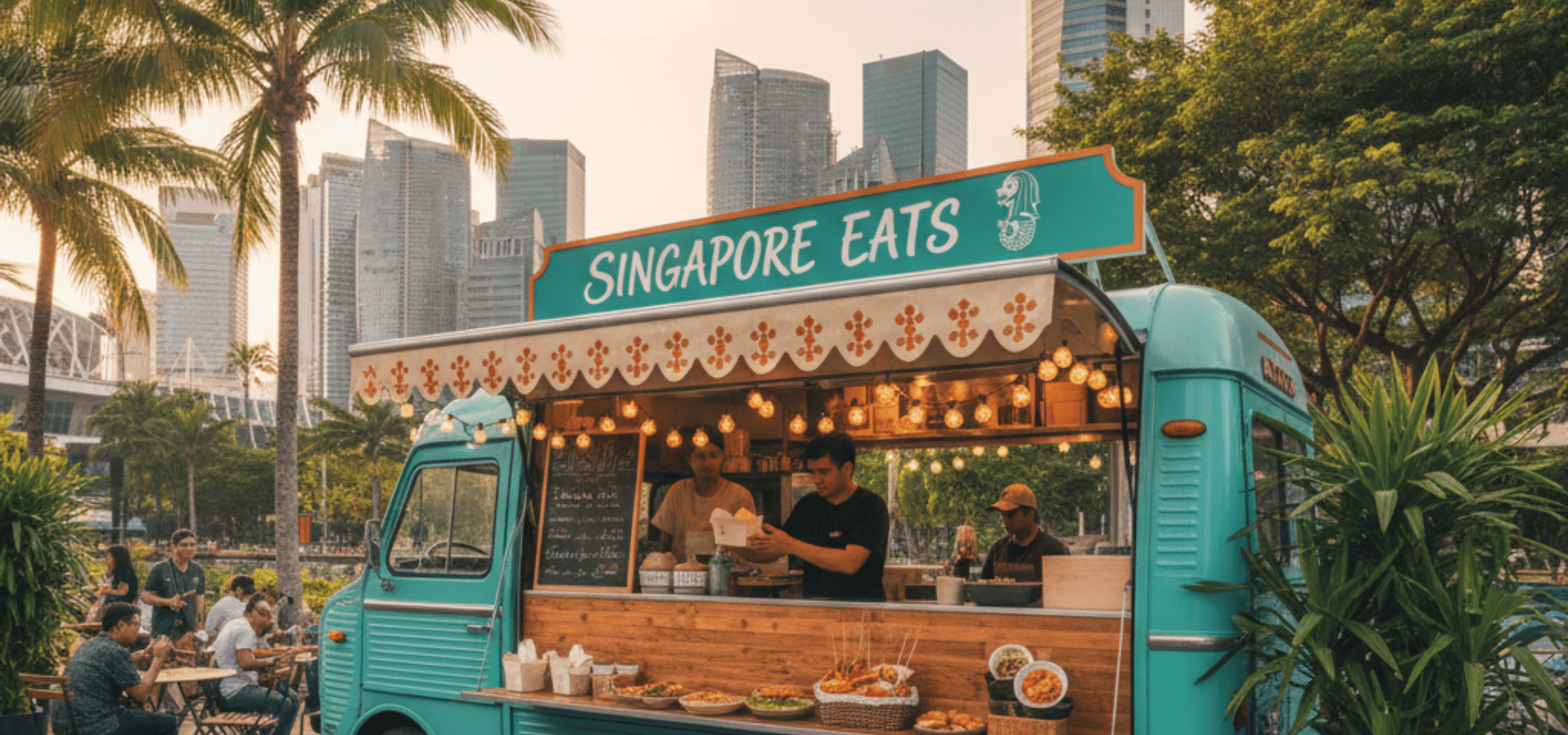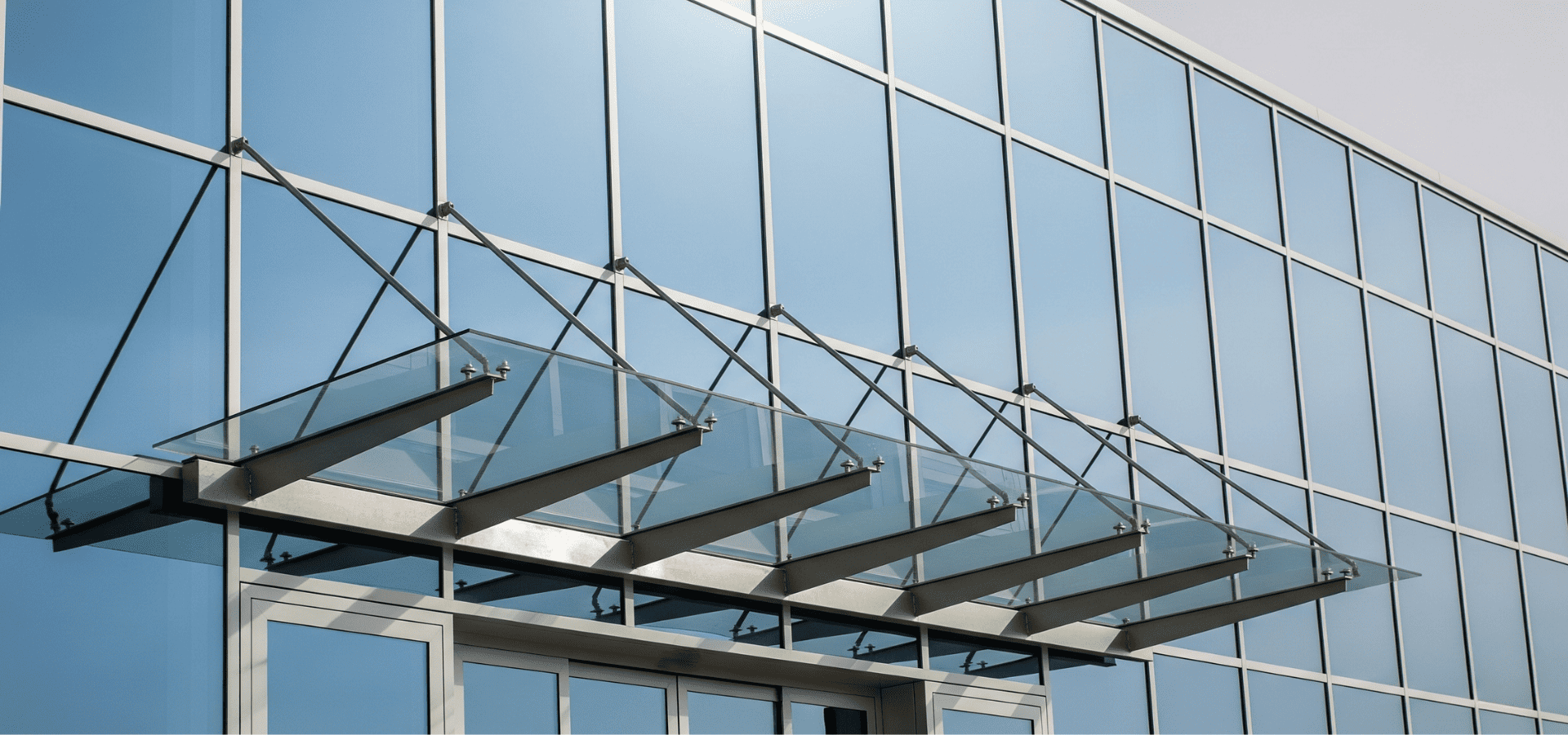What Is An Awning?
There’s something quietly transformative about an awning.
One moment you’ve got an exposed patio or a shopfront baking in the Singaporean sun; the next, with a simple extension of fabric and frame, you’ve created a shaded retreat that feels worlds cooler. It might not be a new invention… But it is a redefined modern moment, all thanks to the humble awning’s mix of style, comfort, and energy-saving smarts.
Still, for all their familiarity, a surprising number of people aren’t quite sure what counts as an “awning.” Is it just a canvas sheet? A fancy pergola? Something that only belongs above café terraces in Europe?
In reality, awnings are a category of shade structure with a long history and an impressive amount of variation. They’re also particularly relevant in Singapore, where tropical sun and sudden downpours make adaptable shelter more a necessity than a luxury item.
So let’s strip it back. What exactly is an awning, what options are out there, and why do people seem to love them so much?
The Core Idea
At its simplest, an awning is a secondary covering attached to the exterior wall of a building. Its purpose is straightforward…
Provide shade and weather protection. That’s it.
Most awnings stretch out horizontally, projecting over windows, doors, patios, or storefronts. They can be fixed in place, manually extended, or fully motorised with sensors and remote controls.
The big difference between an awning and, say, a roof extension is mobility and scale. Awnings are generally lighter, designed for flexible use, and not meant to replace your actual roof. They’re an accessory, but one with teeth — easily capable of changing how a space feels and functions almost instantly.
Awnings In Everyday Life

If you live in Singapore, you’ve probably already walked under dozens of awnings today alone. Shopfronts along shophouse-lined streets, cafés with alfresco seating, HDB void decks with retractable canopies… Awnings are everywhere.
For homeowners, the appeal of the infrastructural mainstays usually comes down to three things:
- Comfort: Shade makes outdoor areas usable during the hottest hours. Even a small stretch of fabric can make a balcony feel like a breezy hideaway.
- Protection: A good awning shields furniture, windows, and doors from harsh UV rays and sudden tropical showers. It’s like sunscreen for your home.
- Energy efficiency: By shading glass, awnings reduce heat transfer indoors, easing the load on air conditioning while killing glare, shaving degrees off your home’s internal temp.
Businesses see awnings slightly differently: they extend floor space, draw in customers with visible branding, and create an inviting frontage that looks lively even before you step inside. The right awning can say, "We're open, we're shaded, we have good vibes and good service."
Why Awnings Work So Well In Singapore
More importantly, awnings function well in Singapore. Truthfully, they’re so ingrained here that it’s as hard to imagine the city awning-less as it is running dry of bubble tea.
The climate is awning-friendly; you’ll get infinite chances to use one. The only real challenge is that the weather swings hard between blazing sun and sudden, sideways rain. Plus, the constant humidity raises the stakes, meaning you need to care well for your awning and consider its material carefully.
So, while you have a better idea of what an awning is, let’s talk about what’s available and best suited to The Lion City.
Types Of Awnings You’ll Encounter
While “awning” is the umbrella term (pun intended), there are plenty of subtypes around.
Each type of awning comes with its own quirks, strengths, and quirks again. Plus, not every type is the ideal choice for Singapore either, so let’s explore.
Fixed Awnings
Fixed awnings are permanently installed, usually with a metal frame and stretched fabric or polycarbonate sheets. They’re sturdy, straightforward, and often the cheapest option.
The trade-off: no flexibility. Once it’s up, it stays up. They’re great for simplicity, but not ideal if you want to play with sun or shade.
Retractable Awnings
Overall, retractable awnings are much better suited to Singapore’s tropical climate. They can be rolled in and out, either by hand crank or motorised system, and are generally the most popular type for homes.
The retractable function is key in Singapore’s unpredictable weather — shade when you want it, protection for the awning fabric when you don’t.
Cassette Awnings
Think of these as the premium version of retractable awnings. The fabric and arms tuck neatly into a cassette case when closed, protecting everything from rain, dust, and UV.
Cassette awnings are a sleek option if you want longevity and clean lines. And, overall, they edge out retractable awnings as the best type in Singapore, thanks to the extra humidity protection you get when retracted.
Drop Arm And Vertical Awnings
Instead of projecting horizontally, these options extend downwards like a screen. They’re often used to shade windows and balconies, blocking low-angle sun without taking up patio space.
Though a different little to other awning types in regards to use-case, they are a perfect choice for west-facing HDBs or homes with long afternoon glare.
Freestanding Awnings

Freestanding awnings aren’t attached to a building at all. Instead, they create standalone shaded zones.
They’re great for poolside areas or outdoor dining spots where wall-mounting isn’t possible — think backyard barbecues and garden nooks. However, you’re also going to have the worst of all times with Singapore’s bureaucratic red tape compared to traditional awnings, so tread lightly.
Materials Matter
And here’s key factor #2, defining the success of your awning in Singapore. Awnings are only as good as what they’re made from. In the Garden City, that means considering both sun and rain, and all the tropical goodness in between.
- Fabrics: Acrylic or solution-dyed polyester are common solutions, as both resist fading, block UV, and handle humidity reasonably well. Cheaper fabrics may look fine initially, but they’ll sag, mould, or lose colour faster. At that point, they get very ugly, very quick.
- Frames: Frames are usually constructed from aluminium or galvanised steel. Aluminium is lighter and rust-resistant, while steel is sturdier overall but needs proper treatment to resist corrosion, particularly in coastal environments.
- Polycarbonate sheets: These show up in fixed awnings. They’re tough, translucent, and let through filtered light, but they don’t retract.
The sweet spot with materials, particularly for Singapore, is often high-quality fabric on a powder-coated aluminium frame — durable, good-looking, and low-maintenance.
What Is An Awning? More Than Just Shade

Now you know the basics, so let’s talk about all the extra perks. Yes, the main job of an awning is to keep the sun off your face...
But here are a few side benefits that make them worth more than the sum of their parts:
- Curb appeal: A well-designed awning changes the façade of a home or shop. The right colour, the right lines, and the right branding… Suddenly, even the most Geylang shophouse starts to look intentional, polished, and welcoming.
- Branding potential: Plus, on branding, fabric awnings simply double as signage for cafés, bakeries, and retail outlets. Your name and logo stretched above the doorway are visible from across the street — both functional and memorable.
- Lifestyle boost: Awnings extend usable space. That corner patio you never sat in because it was too hot? With shade overhead, it becomes your new favourite reading nook.
- Property value: And, here’s the hidden bonus everybody should think about. While not as major as a kitchen remodel, an awning is a lifestyle upgrade that buyers notice. In Singapore, where outdoor space is precious, shaded usability adds real resale value.
Things Awnings Don’t Do (And Shouldn’t Be Asked To)
But here’s the rub: awnings are not mini-roofs. Treat them like one and you’ll be disappointed. (Or worse, dealing with a collapsed frame and a ruined dinner.)
So, since now we’ve so effectively covered what an awning is, here’s what they are not:
- They don’t handle heavy loads: Awnings aren’t designed for standing water, falling branches, or weeks of neglect. They require maintenance and cleaning.
- They’re not storm shelters: High winds are actually the single biggest risk to an awning, which is why retractable models are a near-non-negotiable in Singapore. Even motorised models with wind sensors can’t always react fast enough to sudden gusts.
- They’re not permanent waterproofing: Most fabrics are water-resistant, not fully waterproof. A light rain shower is fine for an awning, but for a monsoon downpour, it’s best to retract and wait it out.
If you want a structure that can take a beating from the elements, you’re better off with a pergola or roof extension. An awning is about flexibility and comfort — not all-weather fortification.
How To Choose The Right Awning For You
So how do you know which type of awning to install? A few key questions help narrow it down:
- Is the space mainly for sun protection or also rain cover?
- Do you want it for a patio, balcony, or windows?
- How important is flexibility? Will you retract it often, or just leave it extended?
- Do you care more about budget, durability, or appearance?
For most Singapore homeowners, a motorised retractable or cassette awning is the sweet spot, especially with high-quality fabric ready for the humidity. This balances practicality with weather protection, and it holds up in a climate where sudden shifts are the norm.
If it’s an area where you’re prioritising sun protection over full weather-resistance, you might be able to get away with a fixed awning or even a nifty vertical option. Plus, for some edge cases, a freestanding structure might be the best fit. But nine out of ten times in Singapore, you will need the flexibility of something retractable.
Installing an awning doesn’t have to be complicated. It’s a fabric or panel stretched over a frame, bolted to a wall: the simple things in life should stay simple. But it should at least work for your space. Because the effect an awning creates — that blend of comfort, protection, and total lifestyle upgrade — is anything but simple.
Think of it less as a gadget and more as a companion to your living space. A flexible extension that lets you claim a bit of the outdoors on your terms. Shade your life when you need it, and let the sky in when you don’t.
Awnings might be simple. But often, it’s the simplest things in life that we can’t go without.


